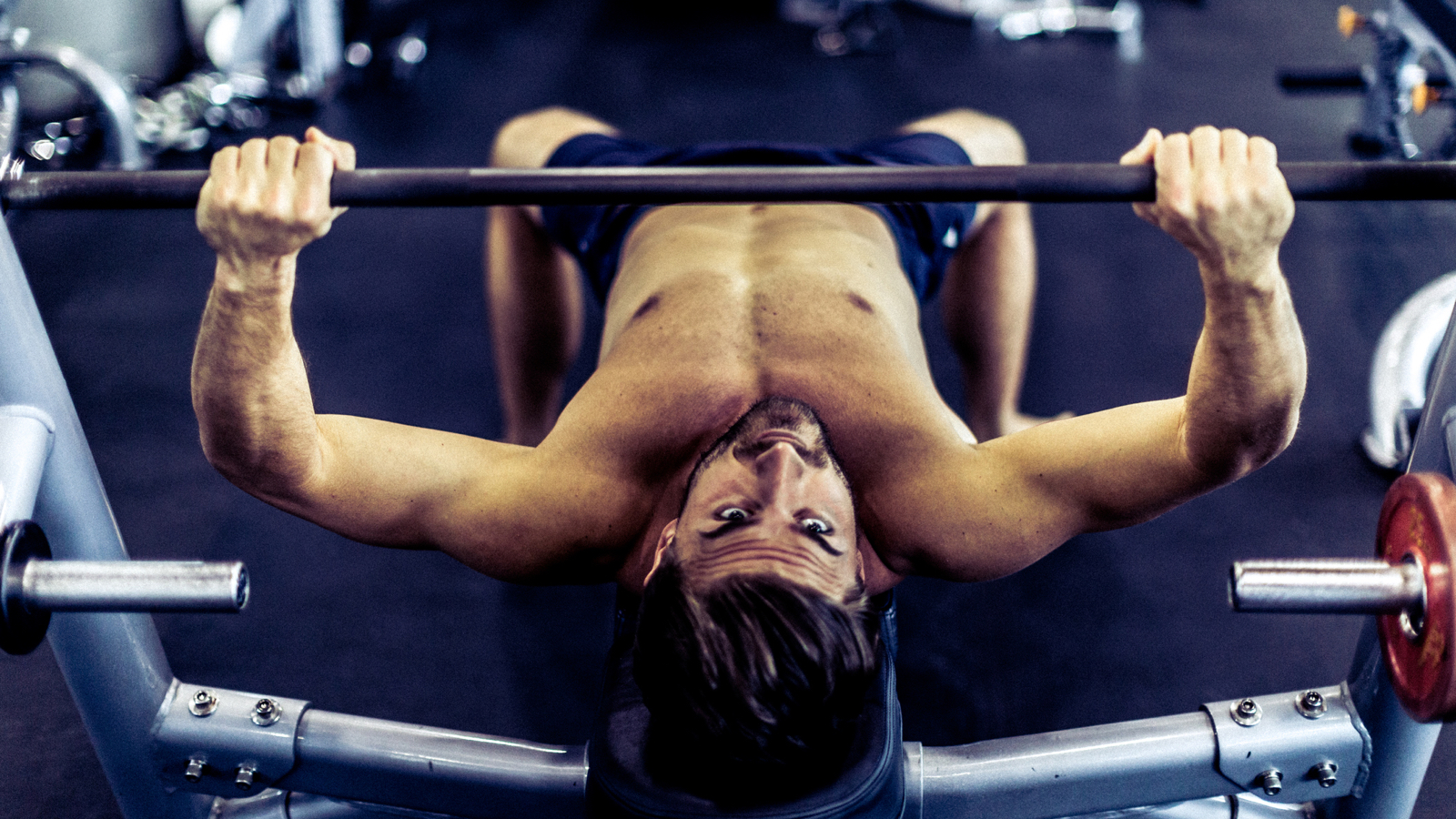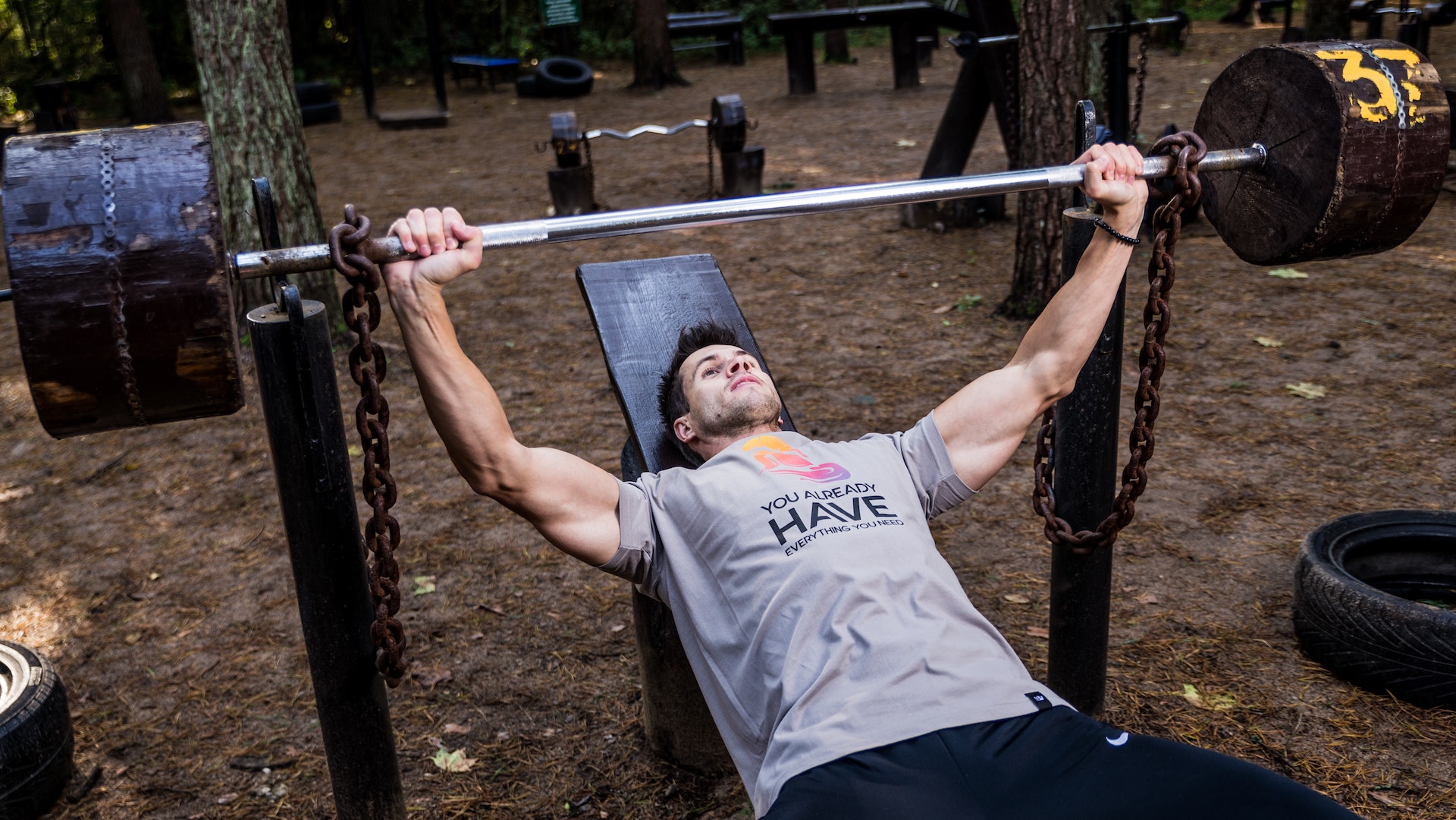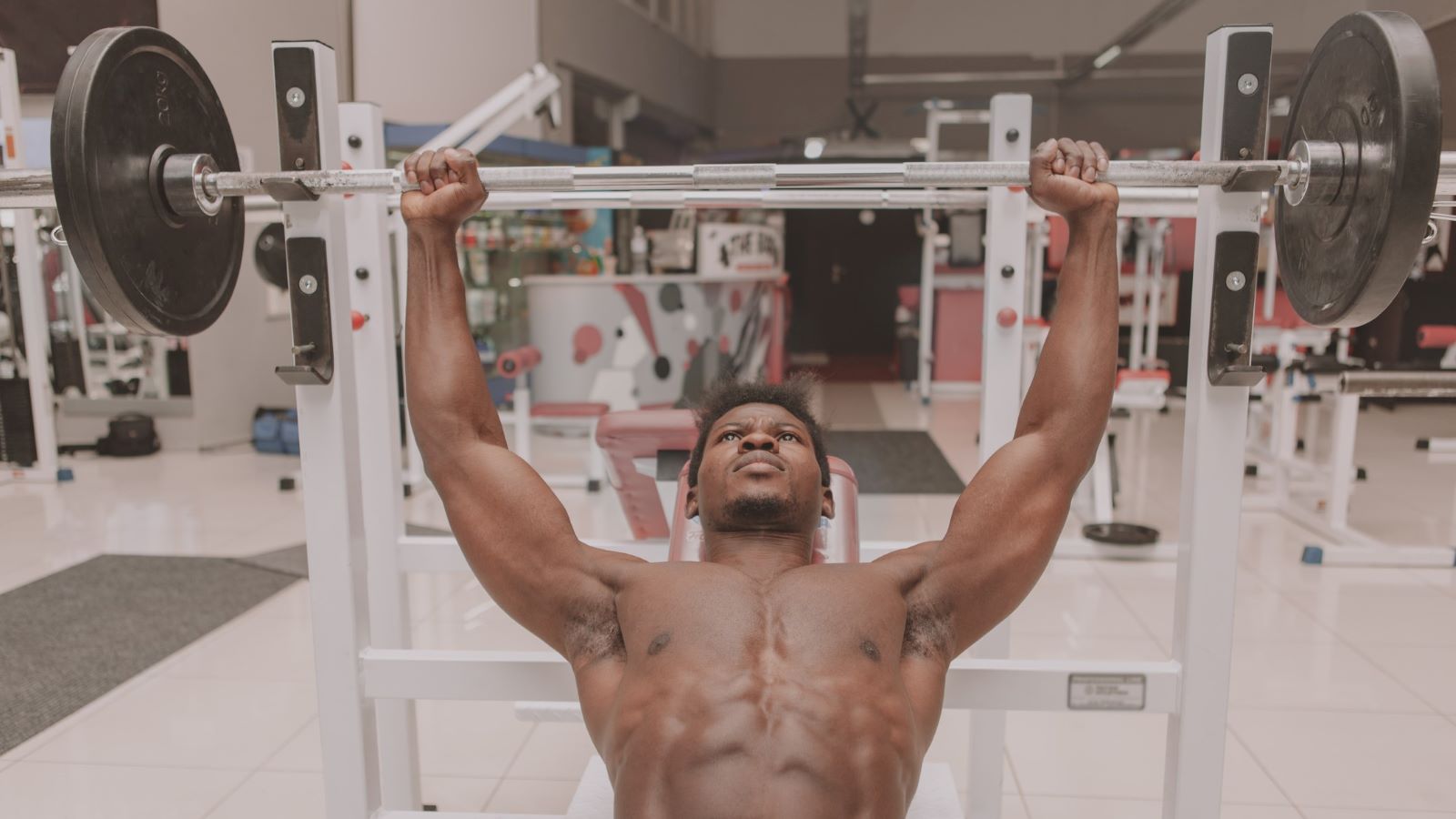

The fact of the matter is, if you master the bench press, you’ll likely be well on your way to a cast iron chest - we’re talking the sort of plumage that looks like armour plating and shifts wiry frames up a t-shirt size or two. That's before we start talking about improvements in strength and smashing those PB goals.
The bench press might be associated with old school beefcakes, like Arnold Schwarzenegger or carved-from-granite bodybuilder Ronnie Coleman, but even modern-day muscle men like Chris Hemsworth and Henry Cavill can be found on their back, pressing barbells in the pursuit of perfect pecs.
However, having the best home weights and a big, super-strong weight bench is not a route to big chest success, in itself. As with most things, you need to both have the gear, and have an idea of how to use it properly. That's where we can help.
If performed correctly, the act of lying on a bench, loading up a barbell with heavy weight plates and lowering said barbell to the chest before explosively pressing it back up again places both the pectoralis major and minor under lots of lovely tension.
On top of this, the front delts and triceps are also called into play, alongside the abs, quads, core and other stabilising muscles - if you're doing it correctly. All in all, it’s a mighty powerful way to build upper body strength and generally bulk up.
Fret not, because if you can’t access a barbell, the bench press can also be performed with just a good set of dumbbells and, especially for pertinent beginners and those wanting to improve, the weight doesn’t have to be particularly impressive. The form is the major factor in growing the chest and improving your bench press technique.
Take a look at the six things below that you could be getting wrong, tweak the form and celebrate chest gains as you’ve never experienced before...
Sign up to the T3 newsletter for smarter living straight to your inbox
Get all the latest news, reviews, deals and buying guides on gorgeous tech, home and active products from the T3 experts
1. Trying to lift too heavy
It’s ok; we’ve all been there. Swanning into a public gym, loading a barbell with a ridiculous amount of weight and then shaking like a chilly whippet when trying to press the mass towards the sky. It’s a surefire way to get embarrassingly stuck beneath a bar, but it’s also destroying your chest gains.
The reason for this is form - or lack thereof - and, unless you are an absolute master of the bench press, it’s doubtful that you are applying the correct form when your body is simply trying to do everything it can (and employing every muscle in its armoury) to get that weight back to a safe place.
There is no shame in practising form with an unloaded bar or very light dumbbells, and until you can properly retract your scapula, form a slight arch in the back and completely remove the shoulders and delts from any pressing movement, stick with lighter weights, higher reps and a slow tempo to keep those pecs under constant tension throughout the motion.
You’ll see much faster gains this way, reduce the chance of injury and avoid looking like a plonker in the gym (when they open again).

2. Not laying down the foundations
“Most people associate the bench press with the pecs and that’s fine because it is the main focus of this exercise, but a good, strong bench press is really a full-body exercise, as it requires activation of the glutes, quads, core, scapular and much more,” explains Dan Best, strength coach and founder of The Calibre Gym.
Before setting up for a bench press, whether that’s with a set of dumbbells or a barbell, it is important to plant the feet on the ground (including your heels), retract your shoulder blades, squeeze the glutes, quads and abs and ensure that the entire chain remains tight throughout the movement.
Nailing this will prevent injury and lead to stronger, bigger lifts. Even a slight tweak in technique can equate to some very impressive gains.
3. Not focusing on your breathing
Breathing is a big part of the bench press because it helps you brace the all-important core muscles and helps direct power to the lift. “It’s pretty common to see someone holding their breath when attempting to press something a little too heavy,” explains Dan Best.
“It’s a natural reaction but it’s definitely not the most efficient way to shift weight around,” he adds. To maximise your bench gains, slowly inhale when lowering the weight towards your chest, sucking in the air by drawing your stomach in.
Hold the air as you pause at the bottom and then exhale as you press the weight back up. Holding your breath during the pressing phase will likely lead to the bar pausing, so try and time that exhale so it lasts the entire length of the press.

4. Loading your joints instead of the muscles
This tip comes with a caveat because powerlifters and other general strong folks will embrace the lock-out, where the arms lock at the top of the lift, simply because they are aiming for a one-rep max and want to move the weight as quickly and as efficiently as possible.
But if your goals are to build a bigger chest, get stronger and improve bench pressing technique, you should look to load up the muscles and not the joints. “When arms are fully locked out at the top of a bench press, most of the weight is being held aloft by the joints,” says Dan Best. “Think of it like racking the weights, but your locked elbow joints are acting as the rack,” he adds.
In order to keep the chest muscles under constant tension (to encourage greater growth), look to finish the press before lock-out, and attempt to pause briefly here before lowering the weight in a slow and controlled manner. Similarly, at the bottom of the press, don’t let the bar bounce off your chest. It gives your pecs a break, promotes poor form and can really hurt your sternum.
5. Not developing your whole upper body
“I always say that you should be able to (bent over) row what you can bench press,” says Dan Best. “Think of the traps, lats and biceps as your brakes during this exercise. If they aren’t strong enough to manage the descent of the barbell or dumbbells, you are essentially skipping 50 per cent of the lift,” he adds.
Similarly, the back and shoulder muscles are important for creating the arch that we mentioned back in point two. For the best results, the shoulder muscles (or scapula) should be pinned back for every rep, like you’re trying to hold a pencil between your shoulder blades.
This not only sets up the movement to place proper focus on the pecs, but it also removes unwanted intervention from the shoulders and front delts, arguably the most commonly injured body part in those on a quest for a bigger chest.
6. Being afraid to mix things up
Sticking with the age-old three sets of ten reps isn’t going to get you anywhere fast and will probably lead to a plateau way sooner than you think. Building a bigger chest requires those muscles to be worked, punished and worked some more, so don’t be afraid to embrace the burn.
If that means adding more reps, then so be it. Similarly, slowing your reps right down will place the muscles under tension for longer and force the muscles to adapt and work even harder. Incorporating resistance bands to a barbell bench press makes the top of the movement more difficult, while simply altering the angle of the bench will hit different areas of the pecs. Try it all.
“I am a firm believer in adding a punishing drop-set to the end of a bench press workout,” says Dan Best. “Attempt to rep to failure before quickly dropping the weight. Keep this up until the barbell is empty or you’ve run out of dumbbells. It's a surefire way to shock the central nervous system into adapting and ensuring those muscles get stronger” he adds.
Leon has been writing about automotive and consumer tech for longer than he cares to divulge. When he’s not testing the latest fitness wearable and action camera, he’s out in a shed fawning over his motorcycles or trying not to kill himself on a mountain bike/surfboard/other extreme thing. He's also a man who knows his tools, and he's provided much of T3's drills coverage over the years, all without injuring himself.
-
 Leaked AirPods prototype looks like Nothing... literally
Leaked AirPods prototype looks like Nothing... literallyAnd we are here for them
By Britta O'Boyle Published
-
 OnePlus Watch 3 lands in the UK with a flurry of freebies and a huge discount
OnePlus Watch 3 lands in the UK with a flurry of freebies and a huge discountThe new titanium-clad smartwatch brings 120-hour battery life, ECG health checks, and some serious launch offers
By Matt Kollat Published